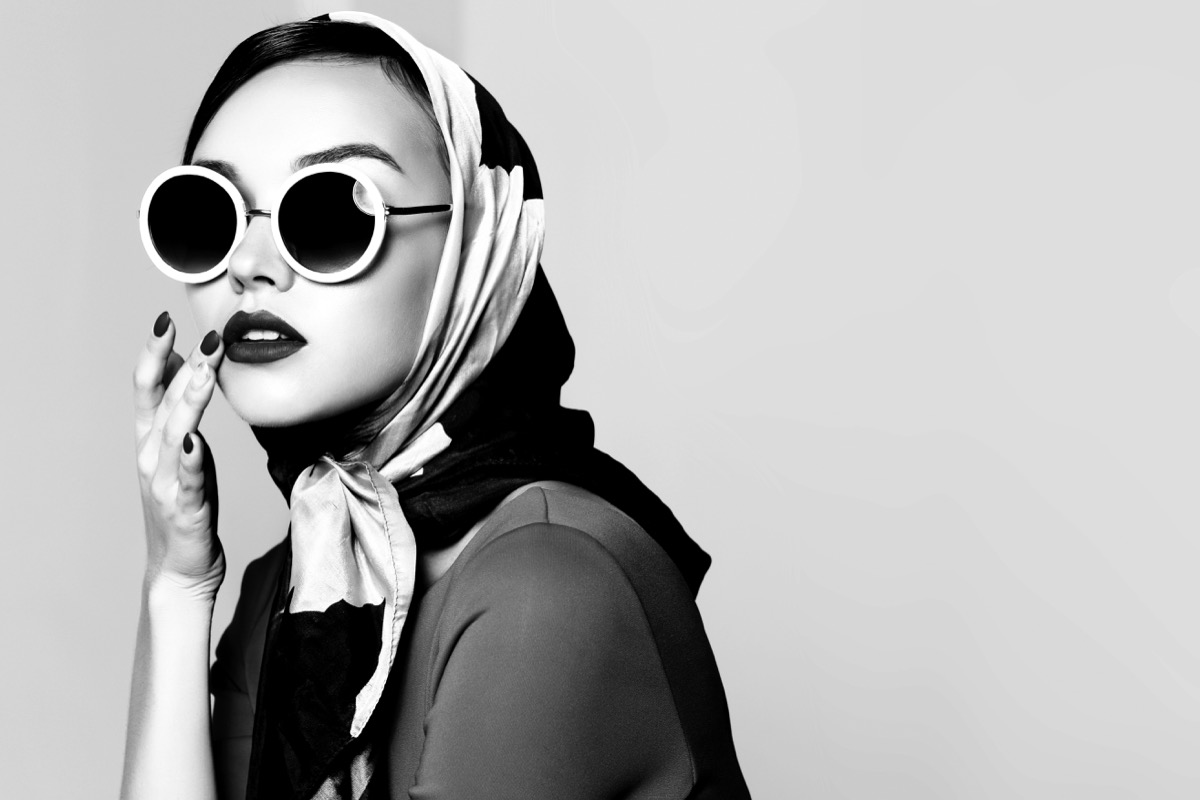Nobody’s face is symmetrical, but science has shown that the more even one’s face is, the more attractive they’re considered to be—and sunglasses can help create some semblance of that. A paper published by The Royal Society in 2011 looked at the human tendency to find symmetry attractive, referencing experiments where people were shown images of faces that had been manipulated to make them appear more evenly balanced. “Evidence for symmetry preferences using these methods is not limited to western populations or even to humans,” the researchers found, suggesting this attraction is universal. “Preferences for symmetry using manipulated faces have been found in African hunter–gatherers, and macaque monkeys gaze longer at symmetrical than at asymmetrical face images.” And for more on what isn’t upping your attractiveness, This Is the No. 1 Turn-Off for Men, According to a Therapist. Vanessa Brown, a senior lecturer of art and design at Nottingham Trent University in the U.K., wrote a book in 2015 called Cool Shades: The History and Meaning of Sunglasses that explores why sunglasses have become the embodiment of attractiveness. Not only does the dark tint of your sunglasses cover up any imperfections around or differences between your eyes, but as Brown points out, they also add hard, regular lines over your naturally softer features, making you look more chiseled. And for more fun facts and tips delivered right to your inbox, sign up for our daily newsletter.ae0fcc31ae342fd3a1346ebb1f342fcb Humans consider eye contact an important gauge of intimacy and connection, as a 2019 study published in the scientific journal Perception confirmed. “Maintaining strong eye contact is widely accepted to be an important communication skill in western cultures,” the study’s lead author Shane Rogers, PhD, from the Edith Cowan University School of Arts and Humanities, said in a statement. While Rogers’ research showed that we’re actually pretty bad at gauging whether someone is looking at our own eyes, our nose, or our mouth (“they perceive direct gaze towards their face as eye contact”), blocking the eyes does make someone feel less connected and more mysterious. Another study, published in the Journal of Sex & Marital Therapy in 2010, found that familiarity is inversely proportionate to desire (the “thrill of the new”), suggesting that simply popping some shades on can add to your mystery, make you more alluring, and keeping the people around you guessing in one swift move. And for more on what else you can do to up your allure, know that Learning This One Language Makes You More Attractive, Science Says. Brown’s book shows how—as an item originally rooted in function—wearing sunglasses conjured up an association with danger, glamour, and daring pursuits since they arrived on the scene in the 1920s. Eye coverings were redolent of racing drivers’ goggles, the eye protectors favored by welders. and the headgear required by aviators. “Fighter pilots were famous for disobeying orders, because, often, they thought they knew better than their superiors,” Brown said in an interview with Cosmopolitan. “Those styles influenced fashion through the ’40s and beyond.” She points out how they then became the calling card of the jazz age, film noir femme fatales, ’60s beatniks, and celebrities alike, while high-end brands like Christian Dior pushed the envelope with space-age designs. All of these reference points have remained regular fixtures in our fashion culture and the association is made subconsciously. When you’re wearing sunglasses, you’re immediately referencing that history, those people, and that attitude, making you look “cool” and more attractive. And for more on what not to wear when you want to look good, check out Wearing This Color Instantly Makes You Less Attractive, Research Shows.



